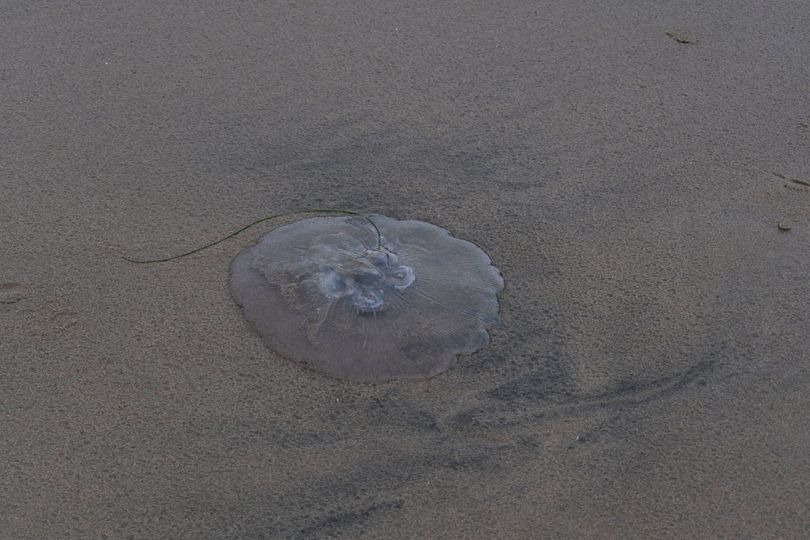Look! It's an astronaut!
My first excursion after returning to the Pacific Northwest was to the People's Coast - Oregon's beautiful ocean beaches. I was greeted with several interesting surprises, including a Moon Jelly. Unlike the stereotypical jellyfish with long, trailing tentacles, the Moon Jelly has really short tentacles that gracefully sweep in tiny foods, such as plankton and diatoms.
Fun fact: the Moon Jelly got to ride in the space shuttle! They didn't quite get to the moon, but about 2500 went into orbit in a study about weightlessness and its effect on internal organs. The jellies got along quite well with each other. By the time the study was complete, over 60,000 jellies were orbiting Earth.
Jellyfish can sense up and down; they orient themselves to gravity in a similar way that we do. A Moon Jelly has crystals inside tiny pockets at the margin of its bell which are coated in specialized hairs. When a jelly rolls (ha!), the crystals slide around inside the pockets, move the hairs, and that tells the jelly which way is up.
The studies showed that artificial gravity does impact the development of internal organs. The space-bred jellies suffered from vertigo. Although they appeared normal, they couldn't move around very well once they came back to earth. Their ability to sense up and down was impaired.
So what does that mean for future humans who may be born in space? We'll have to consult with Star Trek fans for that answer. Oh, sure, you're thinking scientists would be better experts on this matter. Fine. You're just no fun at all! You ask the scientists, and I'll consult with my fellow cosplayers.
My first excursion after returning to the Pacific Northwest was to the People's Coast - Oregon's beautiful ocean beaches. I was greeted with several interesting surprises, including a Moon Jelly. Unlike the stereotypical jellyfish with long, trailing tentacles, the Moon Jelly has really short tentacles that gracefully sweep in tiny foods, such as plankton and diatoms.
Fun fact: the Moon Jelly got to ride in the space shuttle! They didn't quite get to the moon, but about 2500 went into orbit in a study about weightlessness and its effect on internal organs. The jellies got along quite well with each other. By the time the study was complete, over 60,000 jellies were orbiting Earth.
Jellyfish can sense up and down; they orient themselves to gravity in a similar way that we do. A Moon Jelly has crystals inside tiny pockets at the margin of its bell which are coated in specialized hairs. When a jelly rolls (ha!), the crystals slide around inside the pockets, move the hairs, and that tells the jelly which way is up.
The studies showed that artificial gravity does impact the development of internal organs. The space-bred jellies suffered from vertigo. Although they appeared normal, they couldn't move around very well once they came back to earth. Their ability to sense up and down was impaired.
So what does that mean for future humans who may be born in space? We'll have to consult with Star Trek fans for that answer. Oh, sure, you're thinking scientists would be better experts on this matter. Fine. You're just no fun at all! You ask the scientists, and I'll consult with my fellow cosplayers.

